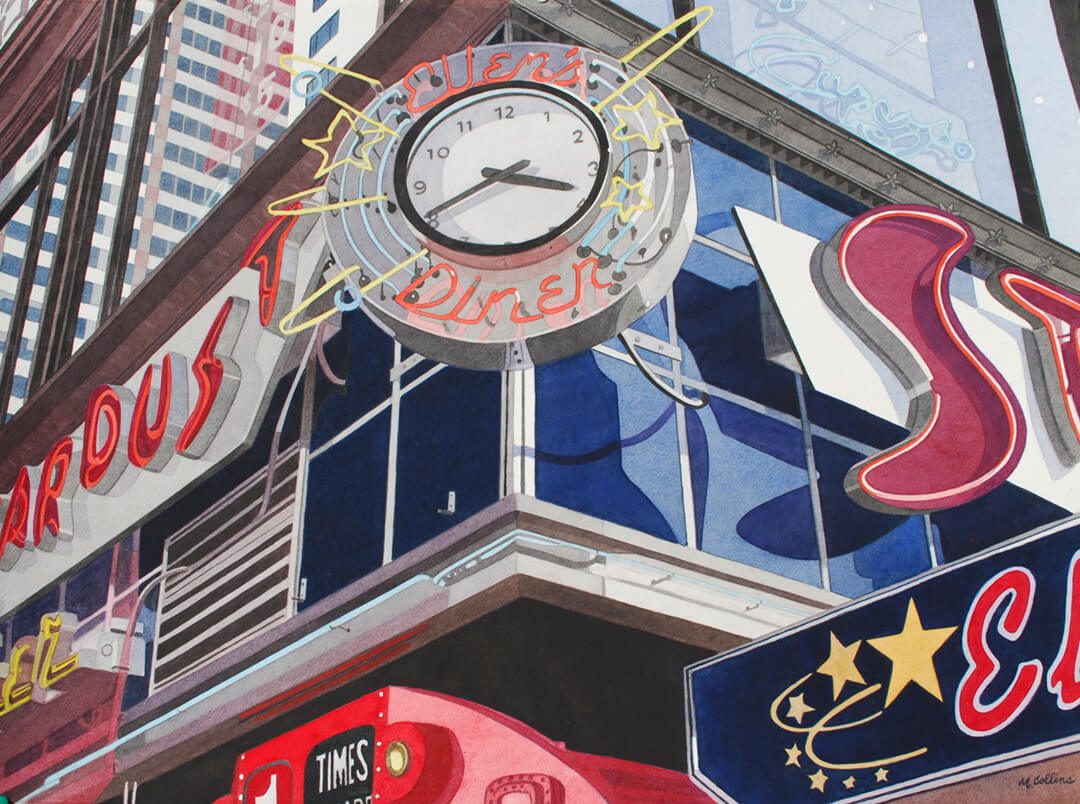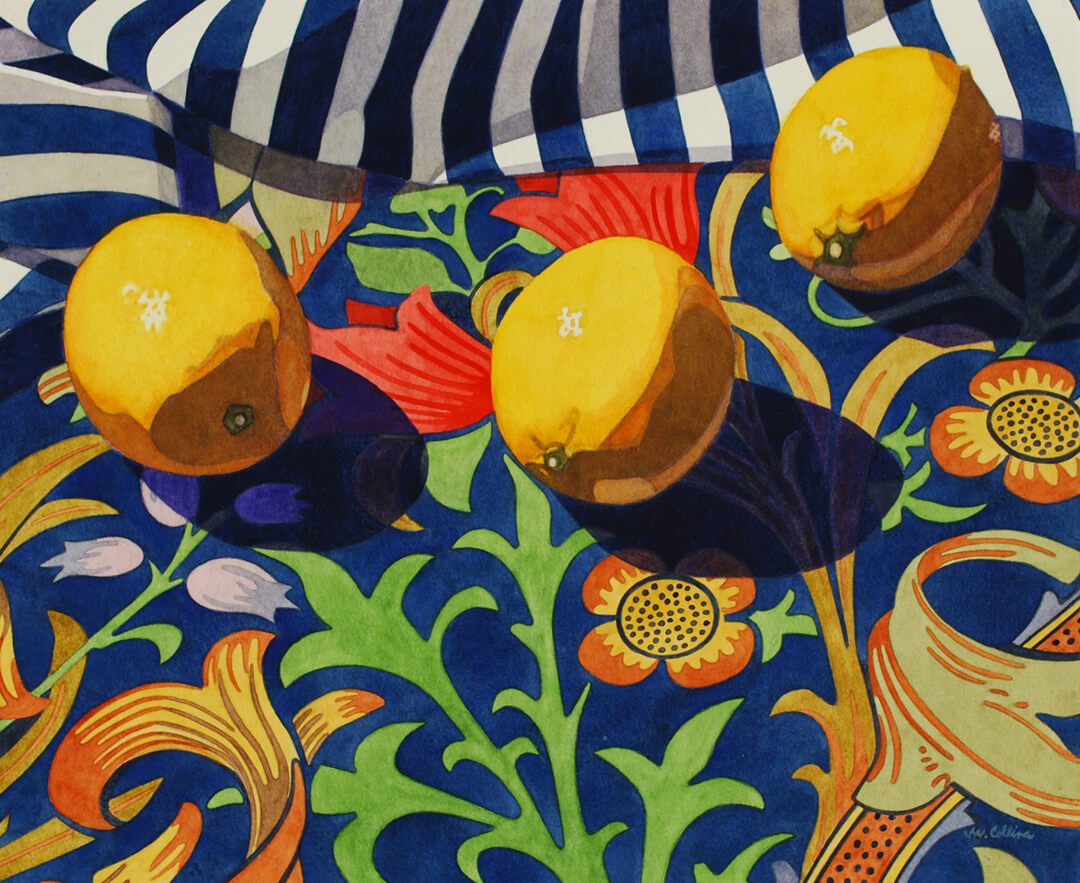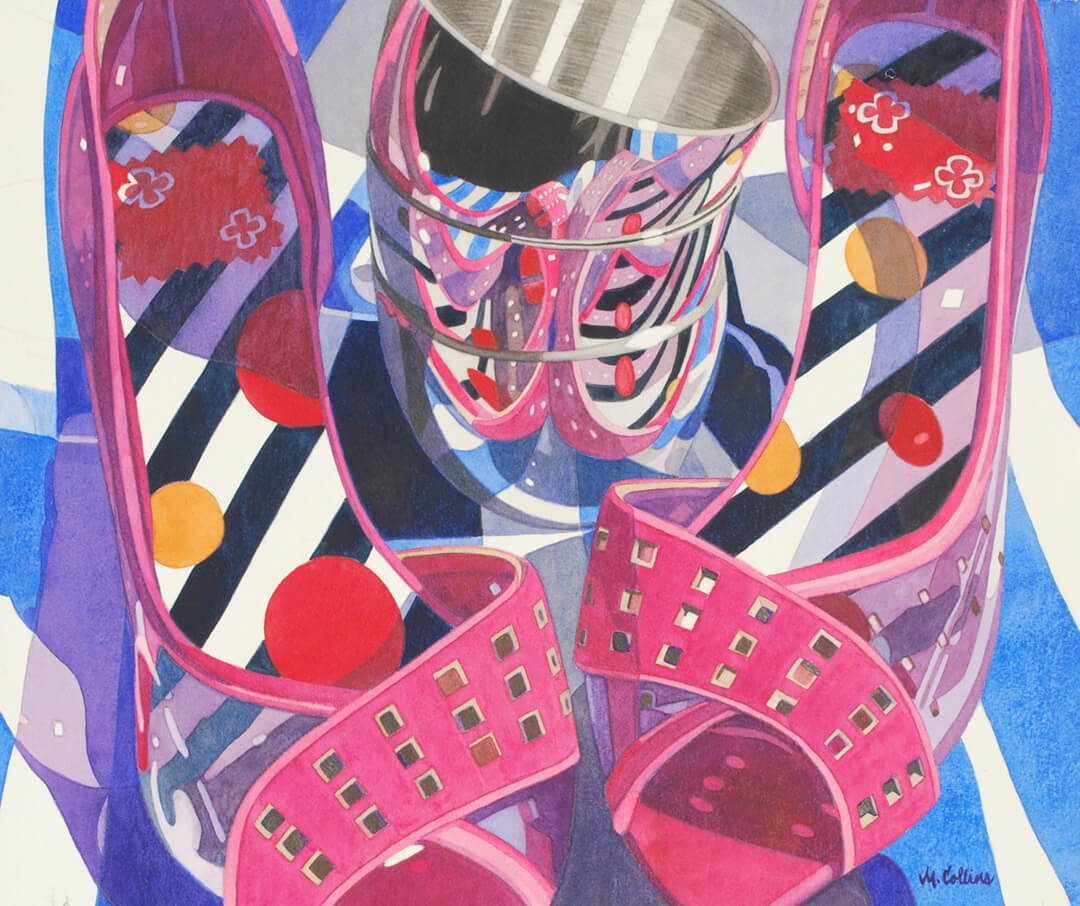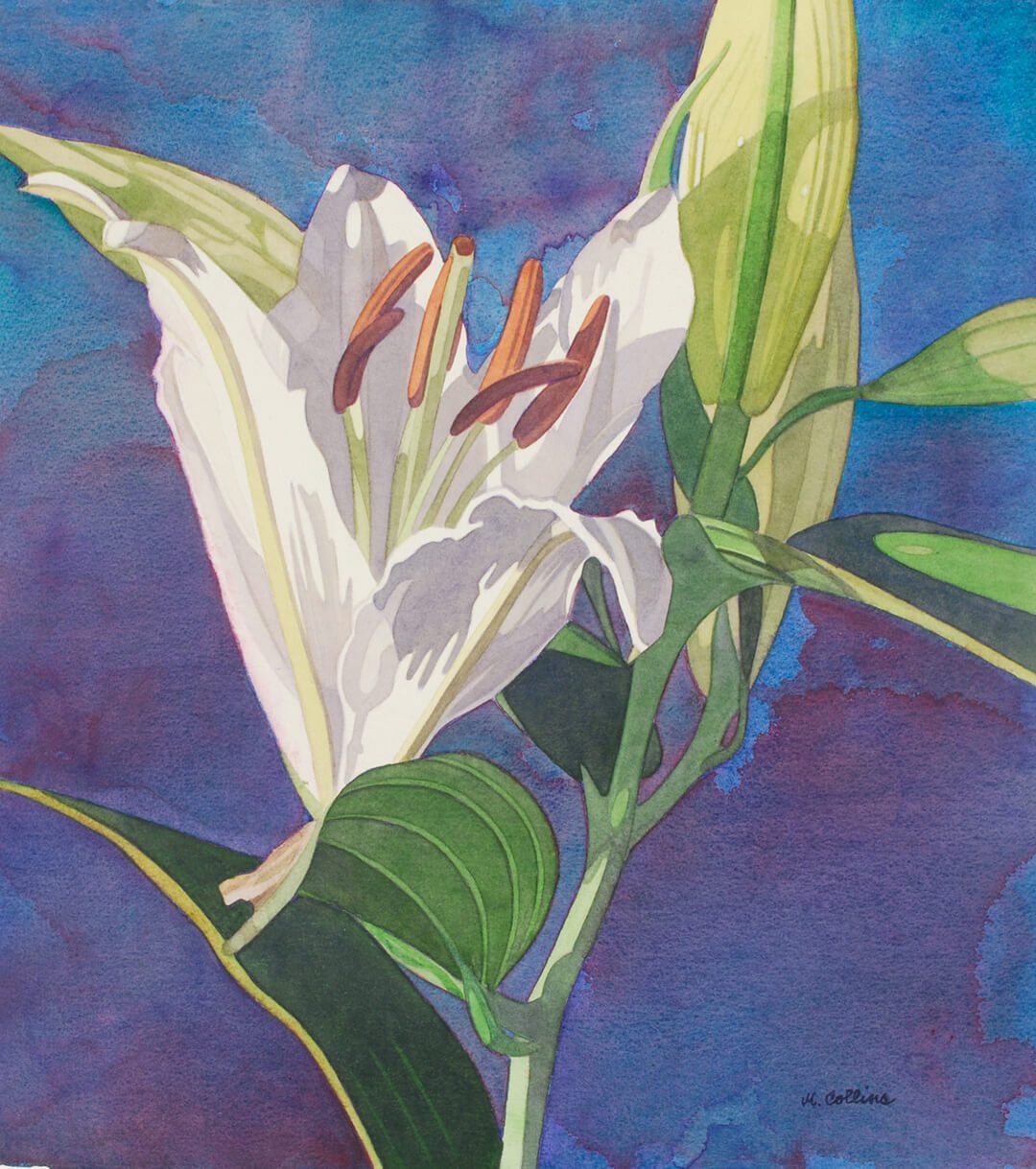Becoming a painter
I decided that I wanted to become a painter at the age of 13 when I won a school scholarship to attend a Saturday lecture series at the Art Institute of Chicago. I was inspired by seeing the many and varied paintings in their collection and learning the stories and techniques of the artists who had painted them.
This experience led me on to studying art and design at the University of Michigan where the emphasis was on the Abstract Expressionism that was very much in vogue at the time, even though my personal interest lay very much more in the realms of representational art.
© Marjorie Collins
Buildings and people
While continuing my studies part-time by attending life classes at the School of the Art Institute of Chicago that were taught in a somewhat expressive style, I realised that my real interests were stimulated by the views of downtown Chicago as seen from the window of the art studio and that I preferred to paint buildings, influenced by Richard Estes and Edward Hopper whose work I had always admired. Similarly, I found that Alex Katz was my inspiration for painting people.
As I developed these themes, I discovered the importance of shape, light and the effect of shadows and developed my own “hard edge” style, working in both oils and watercolours. These influences have stayed with me as I have continued to paint buildings, now primarily in watercolour, and then in recent years moving to paint flowers and still lifes as well. A number of years ago, I started to experiment with acrylic paints instead of oils. This required a fresh technique that “further hardened my edges” and it is this characteristic, translated to watercolour to give intense colour through successive layering of paint, that is most characteristic of my personal style.
Still lifes and florals
In recent years I have tended to concentrate on painting watercolours of contemporary still lifes and florals. These are inspired by bright colours, the use of both simple and complex fabric patterns as backgrounds, and the bold shadow shape that can be produced by setting the objects in a strong light.
© Marjorie Collins
© Marjorie Collins
A collector of objects
As I moved to painting still lifes, I also became an avid collector of objects, sometimes chosen with a specific project in mind, whilst on other occasions chosen for their intrinsic interest and possible future use. Among these are metal and glass vases and bowls that can provide the interesting reflections and refractions that I enjoy painting.
Light and shadow
Reflecting my degree in design, I seek unusual viewpoints in arranging my still lifes. Often my goal is to realise objects larger than life, arranging elements such as fruits and flowers in a shallow space in order to create a strong abstract pattern with the resulting image strictly representational. Especially in my floral paintings, I often move in close to the subject and by using a strong pattern of light and shadow will depict individual petals to give an almost abstract appearance despite the realistic portrayal of the flower.
© Marjorie Collins
Becoming a painter
I decided that I wanted to become a painter at the age of 13 when I won a school scholarship to attend a Saturday lecture series at the Art Institute of Chicago. I was inspired by seeing the many and varied paintings in their collection and learning the stories and techniques of the artists who had painted them.
This experience led me on to studying art and design at the University of Michigan where the emphasis was on the Abstract Expressionism that was very much in vogue at the time, even though my personal interest proved to be very much more on representational art.

© Marjorie Collins
Buildings and people
While continuing my studies part-time by attending life classes at the School of the Art Institute of Chicago that were taught in a somewhat expressive style, I realised that my real interests were stimulated by the views of downtown Chicago as seen from the window of the art studio and that I preferred to paint buildings, influenced by Richard Estes and Edward Hopper whose work I had always admired. Similarly, I found that Alex Katz was my inspiration for painting people.
As I developed these themes, I discovered the importance of shape, light and the effect of shadows and developed my own “hard edge” style, working in both oils and watercolours. These influences have stayed with me as I have continued to paint buildings, now primarily in watercolour, and then in recent years moving to paint flowers and still lifes as well. A number of years ago, I started to experiment with acrylic paints instead of oils. This required a fresh technique that “further hardened my edges” and it is this characteristic, translated to watercolour to give intense colour through successive layering of paint, that is most characteristic of my personal style.

© Marjorie Collins
Still lifes and florals
In recent years I have tended to concentrate on painting watercolours of contemporary still lifes and florals. These are inspired by bright colours, the use of both simple and complex fabric patterns as backgrounds, and the bold shadow shape that can be produced by setting the objects in a strong light.

© Marjorie Collins
A collector of objects
As I moved to painting still lifes, I also became an avid collector of objects, sometimes chosen with a specific project in mind, whilst on other occasions chosen for their intrinsic interest and possible future use. Among these are metal and glass vases and bowls that can provide the interesting reflections and refractions that I enjoy painting.

© Marjorie Collins
Light and shadow
Reflecting my degree in design, I seek unusual viewpoints in arranging my still lifes. Often my goal is to realise objects larger than life, arranging elements such as fruits and flowers in a shallow space in order to create a strong abstract pattern with the resulting image strictly representational. Especially in my floral paintings, I often move in close to the subject and by using a strong pattern of light and shadow will depict individual petals to give an almost abstract appearance despite the realistic portrayal of the flower.